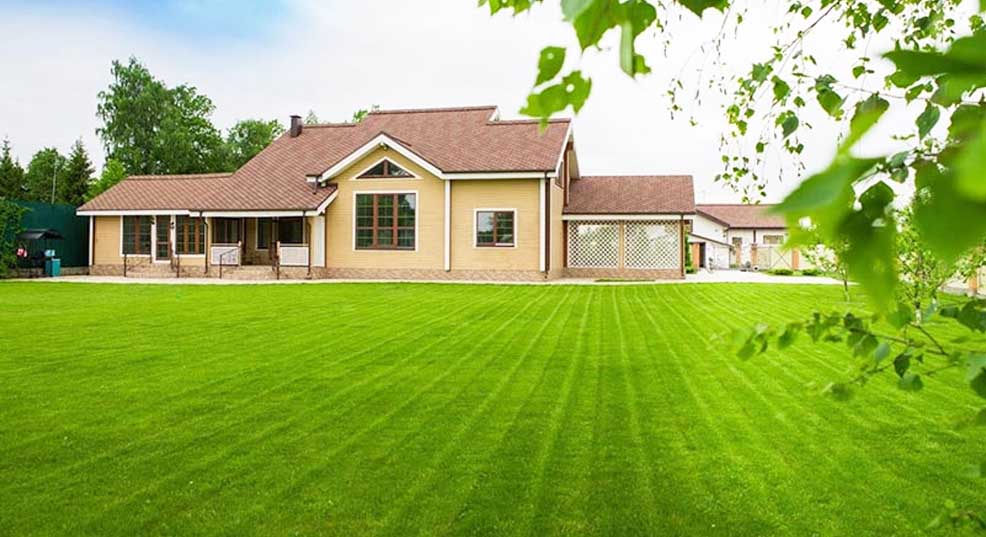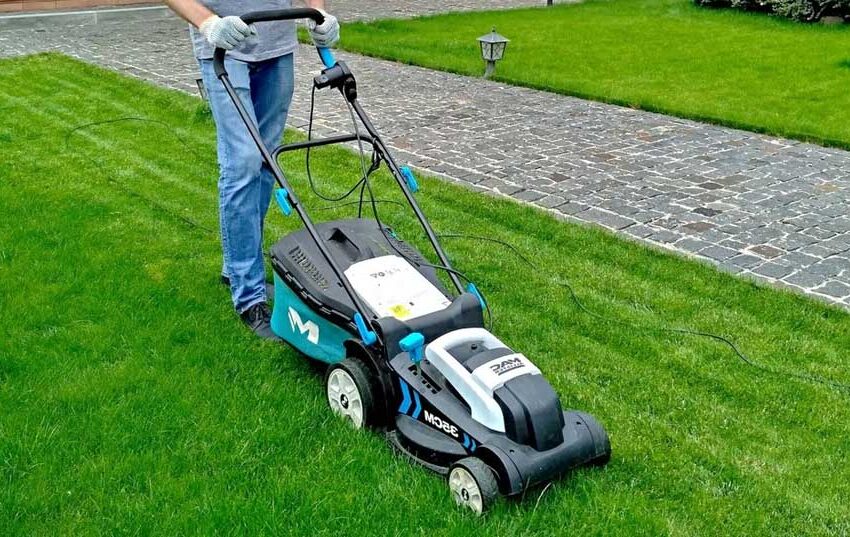All You Need To Know About Fescue Vs. Bluegrass Debate
If there’s one thing that every lawn owner likes, is to keep their green corner healthy and beautiful. And the best way to do it is by planting the right grass
Both the Fescue vs Bluegrass are some of the most popular options to add to your lawn, but choosing between the two can be pretty bewildering. While both of these are cool-season staples, they have their requirements, pros, and cons.
So let’s take a closer look at the Bluegrass vs Fescue dilemma, and determine which would be a perfect addition to your greensward.
What is Kentucky Bluegrass?
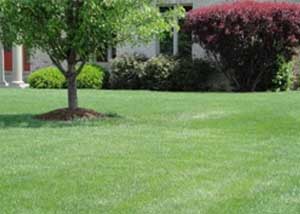
A variety of cool-season grass, Kentucky bluegrass (KBG) is another name given to the common meadow grass or the ones you see on your lawn. With its origin in the Europe and northern part of Asia, this grass species thrives mostly in spring and autumn. And in the USA, the Bluegrass mostly grows in an area rich in heavy-textured soils and on the edges of ponds and waterways.
Identification
In order to fully understand the difference between Fescue vs Bluegrass, you need to understand how KBG looks.
Thus grass is mostly used in a pasture, and it needs sun to develop to its full potential. It is dark-green to bluish-green in hue, and the turf has a medium texture. You will find the tips of the leaves shaped like a boat and the sides parallel. In the hot summer months of June and July, you will find their growth stunted or also dormant.
Pros and Cons
The rhizomes of KBG multiply fast, hence any injuries or damages get quickly healed. This property of the grass also makes it dense and helps it resist a great deal of activity over it. Hence you don’t have to worry about the lawn getting trampled too much. Moreover, this grass survives well in low temperatures ranging from 60 to 90 degrees Fahrenheit, and will easily withstand cold.
However, Bluegrass also has its downsides. It will grow stunted in weathers that are extremely dry and hot. That can lower its balance in the Kentucky Bluegrass vs Fescue comparison. But is there a solution to this problem? Definitely, yes. All you have to do is to blend other species of grass with the seeds of KBG.
What is Tall Fescue?
Identification
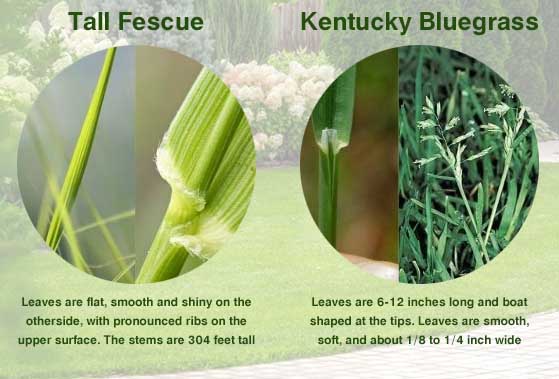
In the Tall Fescue vs Bluegrass debate, you should know that it is not native to the USA either. It is of many kinds, such as turf-type tall fescue and dwarf type. In humid weather, which is the optimal condition for its growth, this grass can get as high as 16 inches. Moreover, pure varieties of this grass sport a coarse, bunchy look and grow in patches.
Pros and Cons
Which pros and cons of this tall grass determine its rank in the Kentucky bluegrass vs tall fescue review?
Firstly, its roots grow deep; hence it can survive prolonged dry conditions like drought. You do not have to prune or water it frequently, either. Its high tolerance for pH (5.4-6.2) makes it ideal for saline soils.
Fescue Vs Bluegrass Comparison
Climate Requirements
Despite thriving in the colder seasons, Bluegrass vs Fescue requires different climates for sustenance. For KBG, the ideal climatic condition is summer with ample sunlight and harsh cold winters, along with well-drained calcareous terrain. Hence, this grass is abundant in the northern US. It needs more shade than KBG; however, it can grow in more soil varieties and does well in dry, warm conditions.
Water Requirements
Fescue vs Bluegrass also requires a different amount of moisture. KBG needs twice as much water as the Fescue. However, you need to water both with at least one to one and one-fourth inches of water every week.
Fertilizer Requirements
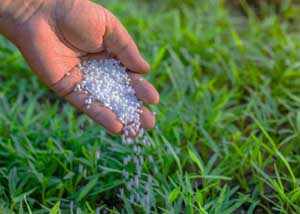
Normally nitrogenous fertilizer works best for both these blades of grass. However, Kentucky bluegrass vs tall fescue still needs different amounts of fertilizer. In a 1000 square feet area of lawn, bluegrass requires 3 to 6 pounds of fertilizer per year. Meanwhile in the same area, for the other grass, 1 pound of nitrogenous fertilizer is enough.
Shade Tolerance
Shade tolerance is also different for fescue or bluegrass. Tall fescue can tolerate light to heavily shaded conditions. It needs to be exposed to direct sunlight for a minimum of 4 hours. Kentucky bluegrass, however, can grow only in lightly shaded regions and cannot grow without a minimum of 8 hours of sunlight per day.
Traffic Tolerance
Hard and red varieties of fescue cannot withstand heavy traffic, and Kentucky bluegrass is more useful in this aspect. You can use it for home lawns. However, for turfs, the former is more suited as it does not get damaged easily. Hence, when we’re talking about the turf type in the Tall Fescue vs Kentucky Bluegrass, the former is the winner.
Weeds and Growth
Without proper maintenance, both kinds of grass are susceptible to weed. Hence, these need to be mowed regularly.
Nevertheless, Tall fescue resists weeds more than Kentucky bluegrass and is also less susceptible to diseases. This is because they can survive extreme weather like hot summer, while Kentucky bluegrass cannot.
Maintenance
Tall fescue grass vs Kentucky bluegrass has separate maintenance requirements. Tall fescue is low maintenance and needs to be mowed only after they are taller than 3 inches. You have to mow Kentucky bluegrass more frequently, every 10-15 days.
Tall Fescue Vs. Kentucky Bluegrass Differences Overview
So, what is the main difference between fescue and bluegrass?
| Tall fescue | Kentucky bluegrass |
| Can survive with 4 hours of sunlight and in moderate shade | Needs at least 8 hours of sunlight and is shade-tolerant |
| Is more traffic resistant | Is less traffic-resistant |
| 1-1.5 inches of water is adequate | Minimum 2 inches of water required |
| Immune to diseases and weeds tolerates heat | Cannot tolerate heat. It is susceptible to weeds and diseases |
| 1 pound of nitrogenous fertilizer per 1000 square feet is enough | 3-6 pounds required |
Final Word
All and all, in the Fescue vs Bluegrass battle, the latter comes out victorious, because of its adaptability to a wider range of climatic conditions. For example, it is the best grass for South Carolina because it can survive the humid subtropical condition, unlike Bluegrass. However, blending two or more species of the grass always works to make them adaptable to all conditions and give your area a more pleasant aesthetic.
